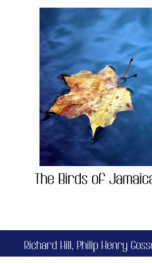the romance of natural history

Purchase of this book includes free trial access to www.million-books.com where you can read more than a million books for free. This is an OCR edition with typos. Excerpt from book: III. DISCREPANCIES. I Use the term at the head of this chapter for lack of a better. There are no real discrepancies in nature, but I may conveniently employ the word to distinguish a class of phenomena not without interest. We occasionally meet with animal or vegetable life existing under conditions, not which are not as truly proper to them as the jungle to the tiger or the river to the crocodile, but which appear to us strange and incongruous; which create in us surprise, as the most prominent emotion of the mind, surprise at finding life, or any particular phase of it, in circumstances where we should not a priori have at all expected to find it. Examples will best explain what I mean. Take, then, the existence of animal life at great depths of ocean. The researches of Sars, MacAndrew, and others, in the Norwegian seas, and those of Edward Forbes in the jEgean, have shewn that mollusca exist under two hundred fathoms of water. Dead shells, indeed, are continually dredged from far greater depths ; but these may have been voided by the many fishes which feed on mollusca, and would, of course, fall to the bottom, whatever the depth of the sea in which the fish might happen to be LIFE IN THE DEEP SEA. 65 swimming. Dentalium entale, Leda pygmcea, and Cryp- todon flexuosus have been taken alive in the northern seas at two hundred fathoms' depth : in the JEgean Sea, Kellia abyssicola and Necera cuspidata, two little bivalves, were dredged, the former in one hundred and eighty, the latter in one hundred and eighty-five fathoms; and Area imbricata in two hundred and thirty fathoms. Nor is the power of sustaining life at such immense depths confined to the molluscan tribes; zoophytes rival them in this respect. Great tree-like corals, Primnoa and Oculina, spring from ...
Users who have this book
Users who want this book
What readers are saying
What do you think? Write your own comment on this book!
write a commentGenre
if you like the romance of natural history try:
Other books by this author
Do you want to read a book that interests you? It’s EASY!
Create an account and send a request for reading to other users on the Webpage of the book!







